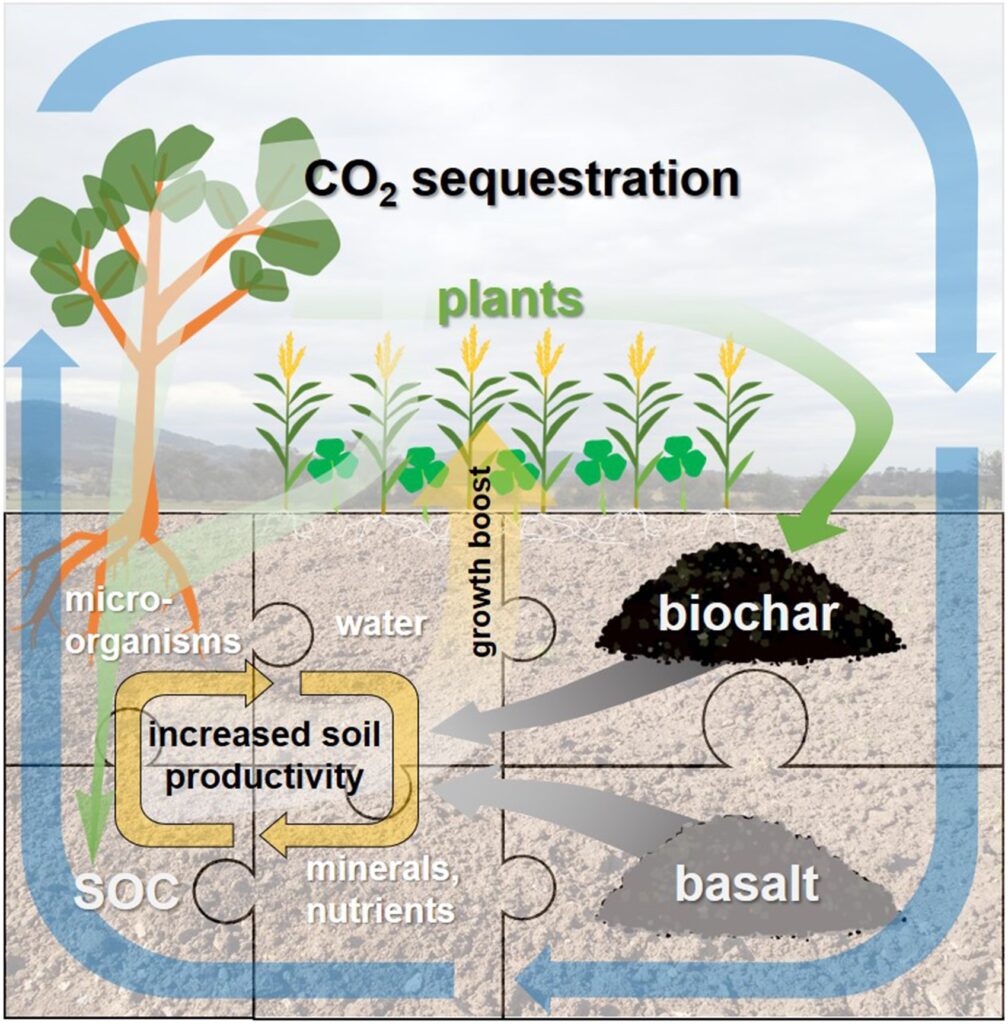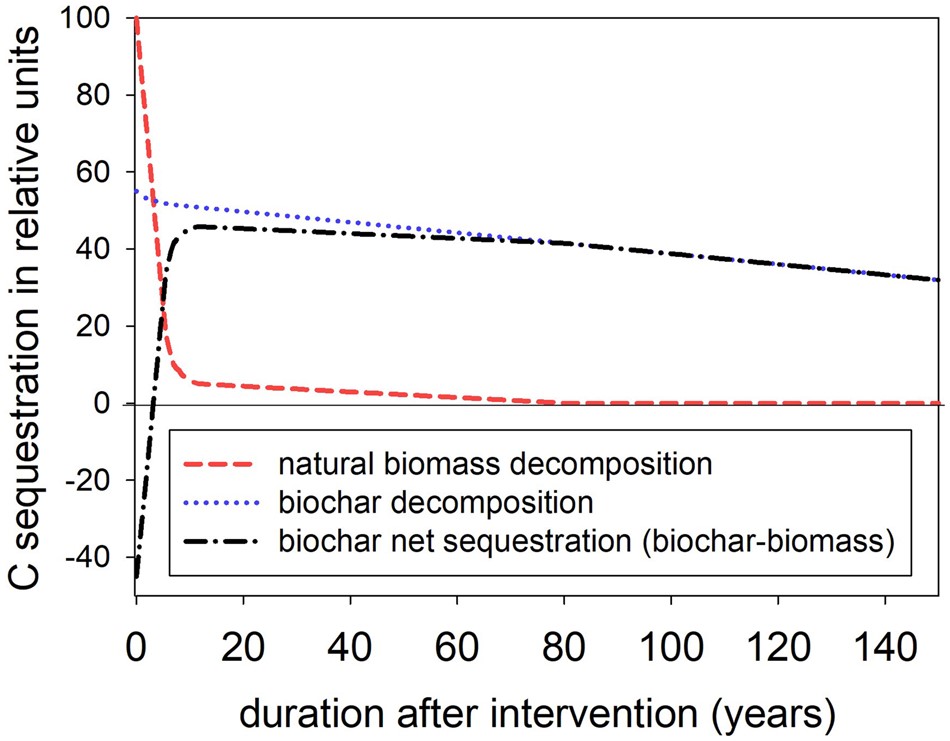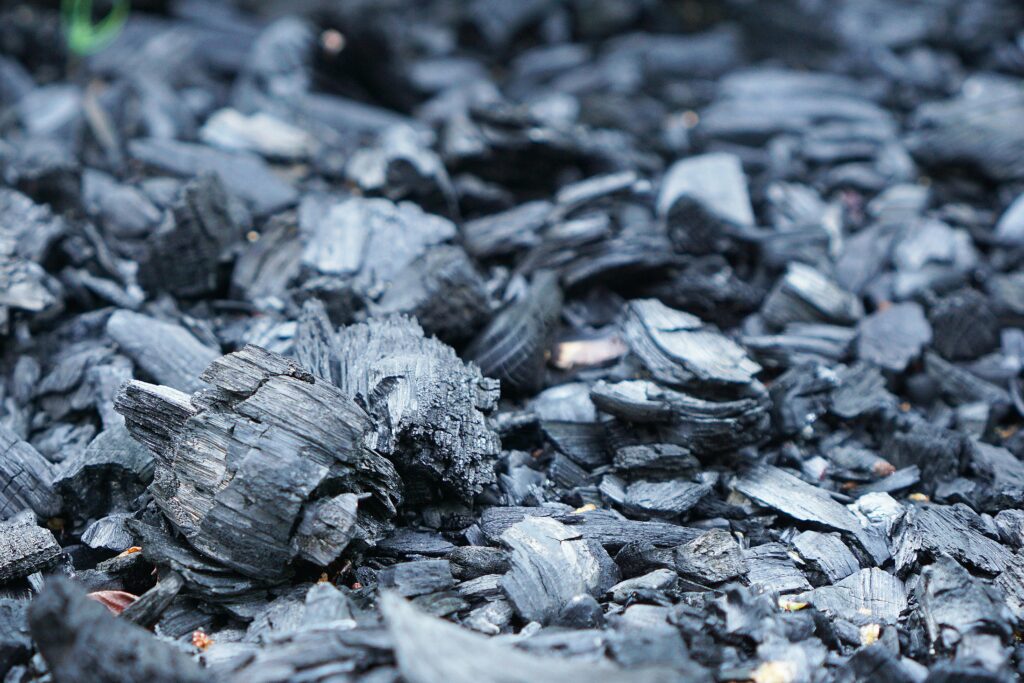The Hidden Alchemy of Biochar and Basalt
A review of: Enhancing natural cycles in agro-ecosystems to boost plant carbon capture and soil storage by W. Buss, K. Yeates, E. J. Rohling, & J. Borevitz, 2021, Oxford Open Climate Change
As the authors of Enhancing natural cycles in agro-ecosystems to boost plant carbon capture and soil storage write, “Reductions of carbon dioxide emissions alone are no longer sufficient to avoid dangerous impacts … [C]apture plus long-term storage of atmospheric carbon will be required.” Their article evaluates how enhancing natural biogeochemical cycles within agro-ecosystems can increase plant carbon capture and long-term soil storage while improving resilience and productivity.
Integrating Natural Cycles
The authors outline a suite of land-based strategies designed to strengthen carbon capture and storage in agricultural landscapes. Practices such as cover cropping and agroforestry increase biomass inputs, while microbial and mineral interactions help stabilize soil organic carbon (SOC). Among these, two amendments stand out: biochar and basalt rock dust, whose combined effects may offer a scalable and enduring pathway for negative emissions.

Central to the article is their analysis of biochar–basalt complementarity. Biochar, pyrolyzed biomass produced by burning under limited oxygen, locks plant-captured carbon into a stable form lasting 500–1000 years. Using estimates from a 2016 study showing that decomposition of biochar occurs at roughly 1/60 the rate of unpyrolyzed biomass, biochar becomes carbon-negative within just three to five years.
Beyond its durability, the paper argues that biochar also improves soil structure, enhances water retention, and increases nutrient availability for crops. Basalt acts through geochemical weathering, consuming CO₂ while releasing calcium, magnesium, potassium, and phosphorus. These nutrients raise soil pH, buffer acidity, and provide mineral surfaces that stabilize organic matter through aggregation and mineral association.
Individually, both basalt rock dust and biochar contribute to carbon storage, but both face practical limits. Soil organic carbon pools can saturate; biochar production depends on residue availability and cost; and basalt weathering proceeds slowly under field conditions. Applied together, however, they form a mutually reinforcing system. Biochar enhances soil porosity and hydrology, helping roots and microbes access basalt particles and accelerate weathering. Basalt, in turn, supplies nutrients and alkalinity that strengthen biochar’s persistence and agronomic benefits. Together, these feedbacks illustrate how biotic and abiotic processes intertwine to sustain soil–plant systems. The result is a regenerative, carbon-negative agro-ecosystem capable of sustaining both productivity and long-term sequestration.
Challenges and the Path Forward
Despite its comprehensive synthesis, the article draws largely on modeling assumptions rather than long-term field data. Field and mesocosm studies often show slower weathering rates than laboratory experiments, reflecting how soil type, climate, and hydrology influence reactions. Biochar use may also compete with other residue needs, such as mulching or erosion control, and basalt weathering can take years to decades under field conditions.

Beyond these technical uncertainties, scaling up from test plots to working farms introduces additional complexity. Soil and climate diversity make standard measurements difficult, and the lack of consistent monitoring, reporting, and verification (MRV) protocols limits comparison across sites. Progress will require coordinated field trials, improved soil–crop models that capture carbon and hydrological dynamics, and integration with techno-economic tools. Translating scientific insights into practice will depend not only on technology but also on supportive policies, financial incentives, and farmer engagement. Achieving these goals will require steady collaboration among scientists, policymakers, and farmers to connect research with on-the-ground realities.
The hidden alchemy of biochar and basalt transforms what was once discarded into a living archive of carbon and renewal. It turns decay into fertility, loss into endurance. To join that alchemy is to take part in a restoration of the planet, one that begins in soil and extends to the horizons of possibility. In this way, the partnership of biochar and basalt carries forward the spirit of the remineralization movement, a return of minerals to the soil, and of care to the earth. Realizing this vision will depend on shared efforts among scientists, policymakers, and farmers, an ongoing effort to align human intention with the work of the Earth itself.
Qi Zheng is an undergraduate student in Environmental Policy and Sustainable Development with Economics at the London School of Economics and Political Science. She is interested in climate policy, soil carbon sequestration, and sustainable land management, and is also exploring the intersections of environmental governance and economic development.
Support us on Patreon
Thank you for joining us today! Please become a member of RTE and support us on Patreon. Unlike many larger organizations, we work with a team of determined and passionate volunteers to get our message out. We aim to continue to increase the awareness of remineralization to initiate projects across the globe that remineralize soils, grow nutrient dense food, regenerate our forests’ and stabilize the climate – with your help! If you can, please support us on a monthly basis from just $2, rest assured that you are making a big impact every single month in support of our mission. Thank you!








Got something to say?